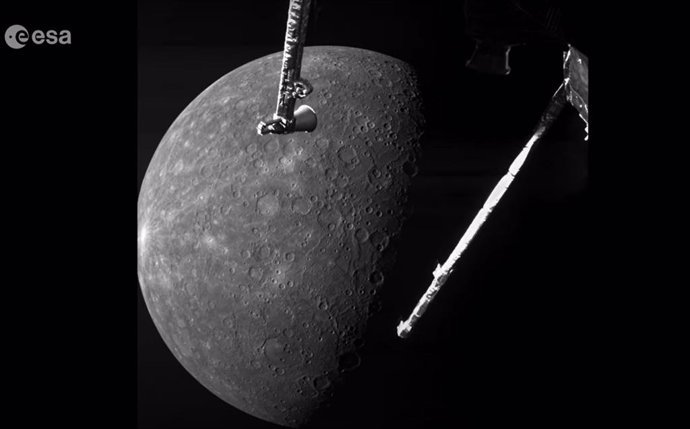September 13 () –
ESA has released a video with the closest pass to a planet ever made, when the BepiColombo probe sped past Mercury on September 4.
The pass marked BepiColombo’s closest approach to Mercury to date, and for the first time, the probe had a clear view of Mercury’s south pole.
This video in ‘time lapse’ It is composed of 128 different images captured by BepiColombo’s three tracking cameras, M-CAM 1, 2 and 3. The planet is seen entering and leaving the fields of view of M-CAM 2 and 3, before M-CAM 1 sees the planet moving away into the distance at the end of the video.
The first images were taken in the days and weeks leading up to the flyby. Mercury first appears in an image taken at 21:50 UTC on September 4, at a distance of 191 kilometers. The point of closest approach occurred at 21:48, at a distance of 165 km.
The sequence ends about 24 hours later on 5 September 2024, when BepiColombo was about 243,000 km from Mercury, ESA reports.
During the flyby, it was possible to identify several geological features that BepiColombo will study in more detail once it is in orbit around the planet. Four minutes after the closest approach, a large “peak ring basin” called Vivaldi could be observed.
VIVALDI’S MUSIC
This crater was named after the famous Italian composer Antonio Vivaldi (1678-1741). The flyby of the Vivaldi crater was the inspiration for using ‘The Four Seasons’ by Antonio Vivaldi as the soundtrack for this time-lapse.
Peak ring basins are mysterious craters created by powerful asteroid or comet impacts, named for the inner ring of peaks on an otherwise flat ground.
A couple of minutes later, another peak-ring basin could be seen: the newly named StoddartThe name was recently assigned following a request from the M-CAM team, who realized that this crater would be visible in these images and decided that it would be worth naming given its potential interest to scientists in the future.
BepiColombo’s three monitoring cameras provided 1024 x 1024 pixel snapshots. Their main purpose is to monitor the spacecraft’s various arms and antennas, hence we see parts of the spacecraft in the foreground. The images of Mercury are a bonus.
The Sept. 4 gravity flyby was the fourth at Mercury and the seventh of nine planetary flybys in total. During its eight-year journey to the Solar System’s smallest and innermost planet, BepiColombo is conducting one flyby of Earth, two of Venus and six of Mercury to help guide it on course to orbit Mercury in 2026.





![[Img #74683]](https://thelatestnews.world/wp-content/uploads/2024/12/The-main-mistakes-to-avoid-when-betting-on-electronic-sports-150x150.jpg)







![[Img #74683]](https://thelatestnews.world/wp-content/uploads/2024/12/The-main-mistakes-to-avoid-when-betting-on-electronic-sports-300x200.jpg)


Add Comment